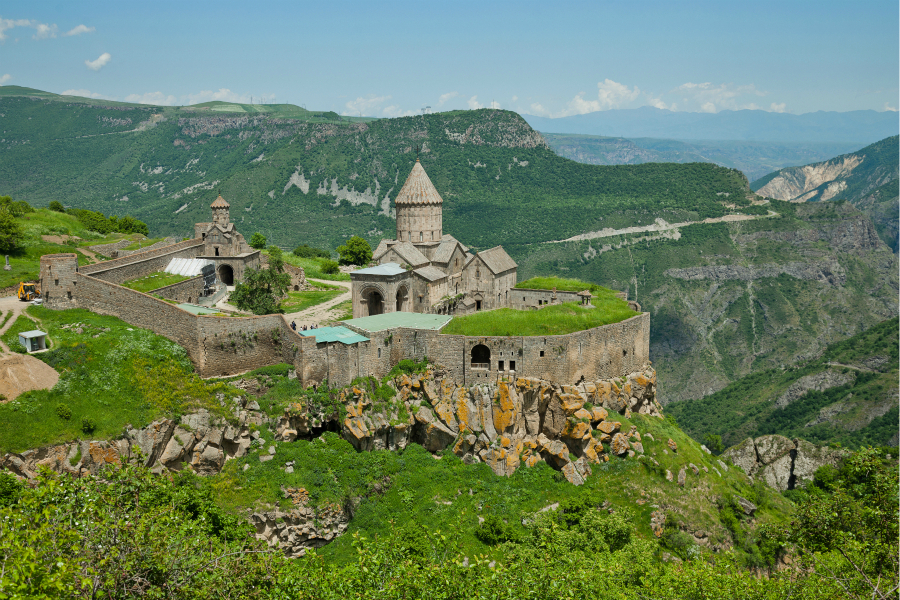
The Tatev Monastery, located near the village of Tatev in Syunik district, has a rich history dating back to the 9th century. It was established on the site of a well-known tabernacle from that era. During the Middle Ages, Tatev served as the political center of the Syunik principality and was a bustling community with a population of 1000 people in the 10th century. By the 13th century, it controlled an impressive 680 villages.
The main church of Poghos and Petros built between 895 and 906, stands at the heart of the complex. Its exterior exudes a simple yet imposing appearance, with harmonious proportions that accentuate its considerable height. Inside, the church was lavishly decorated with frescoes, although many have been lost over time. Notably, a significant fresco depicted Christ on a throne, surrounded by three prophets and four saints.
Adjacent to the main church is the St. Grigory church, which was constructed in 1295, replacing an earlier building from 836-848. The “Gavazan” monument, erected in 904, is a remarkable work of Armenian architectural and engineering art. This octahedral pillar, standing eight meters high, is adorned with an ornamental cornice.
The square-shaped church of St. Astvatzatzin, dating back to the 11th century, completes the Tatev ensemble. The monastery beautifully blends into the surrounding mountainous landscape, with the grand main church standing out as the architectural centerpiece.
Tatev Monastery not only served as a religious hub for the region but also housed a renowned university where arts and sciences were studied. This university gained fame not only in Armenia but also abroad, attracting students from various places. Many famous Armenian scientists, writers, and artists were nurtured within the walls of this prestigious educational institution. Today, Tatev Monastery continues to awe visitors with its historical significance, breathtaking architecture, and natural splendor.
